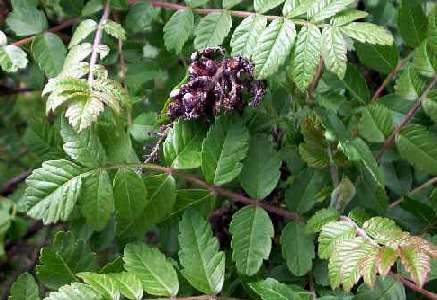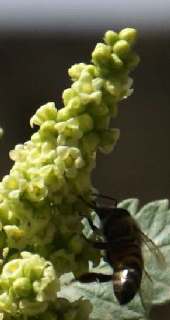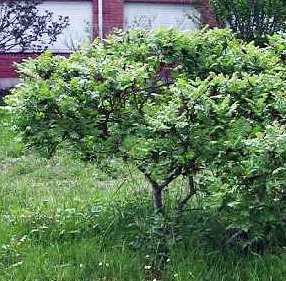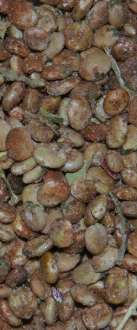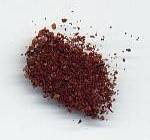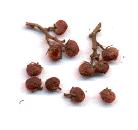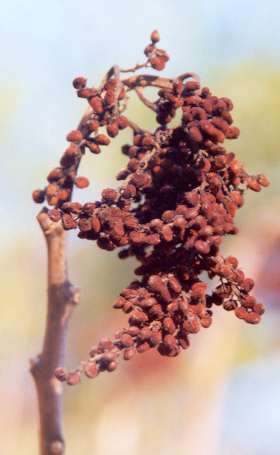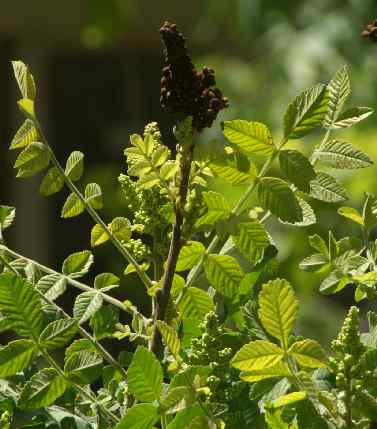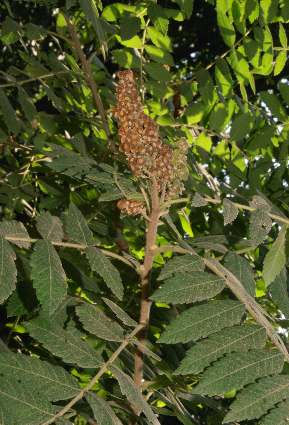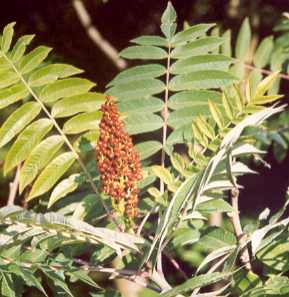
|
| Sumac fruits on a tree |
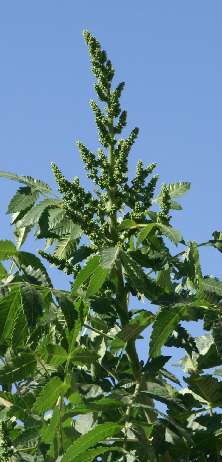
|
| Flowering sumac |
In Jordan, a spice mixture called zahtar (za'tar [زعتر]) is extremely popular; it took its name from a local species of marjoram which is one of its main ingredients. Since this West Asian marjoram is hardly available outside of the region, it must be substituted by a mixture of marjoram with some thyme or oregano. Zahtar is, then, made by combining the dried marjoram herb with nutty sesame seeds, acidic sumac, salt and optionally some pepper. Similar mixtures are reported from Syria and Israel. Zahtar is mostly used to spice up fried and barbecued meat up to taste; combined with olive oil, it can also be used as a bread dip like the closely related Egypt spice mixture dukka [دقه] (see thyme).
Another use of sumac is recorded from Lebanon, Syria and Egypt: The fruits are cooked with water to a thick, very sour essence, which is, then, added to meat and vegetable dishes; this method was also common as early as in Roman times (see silphion for details of Roman cookery) and finds a close parallel in the usage of tamarind in contemporary Indian and Indonesian cuisines.
Outside of the Middle East, the true sumac spice is not known; yet, there are sumac species with culinary merit also further in the East. For example, Rh. chinensis (Chinese Sumac) grows in the Himalayas, in China and South East Asia. In Nepal, it is used to prepare a delicious sour and fruity pickle (amilo achar [अमिलो अचार] by some Himalayan ethnicities like the Thakali. In the North East Indian states Nagaland and Mizoram, sumac fruits are dried, coarsely ground and used as table condiment, or (often mixed with salt and chile powder) just enjoyed between meals.
For an account on sour spices, see mango.
